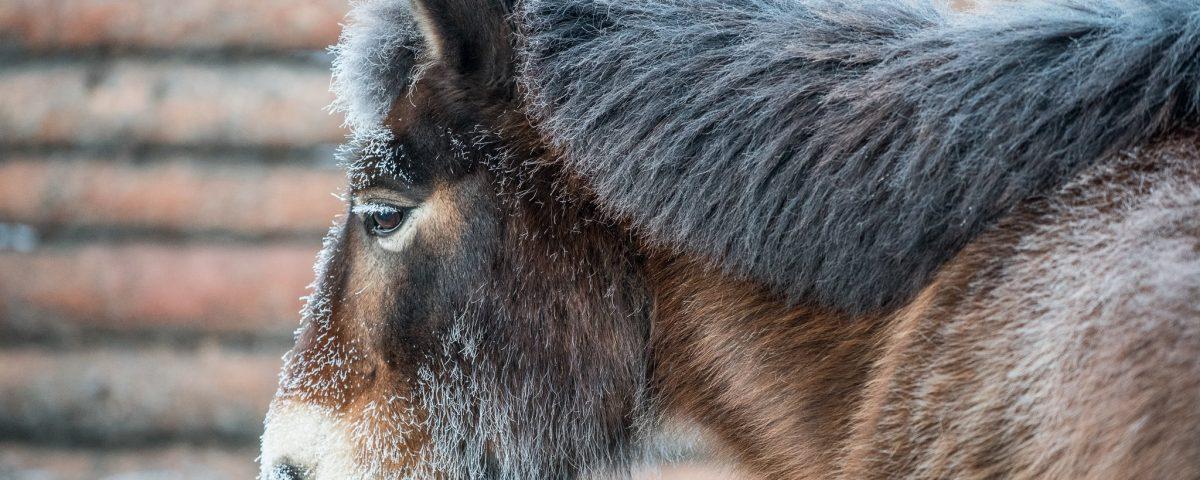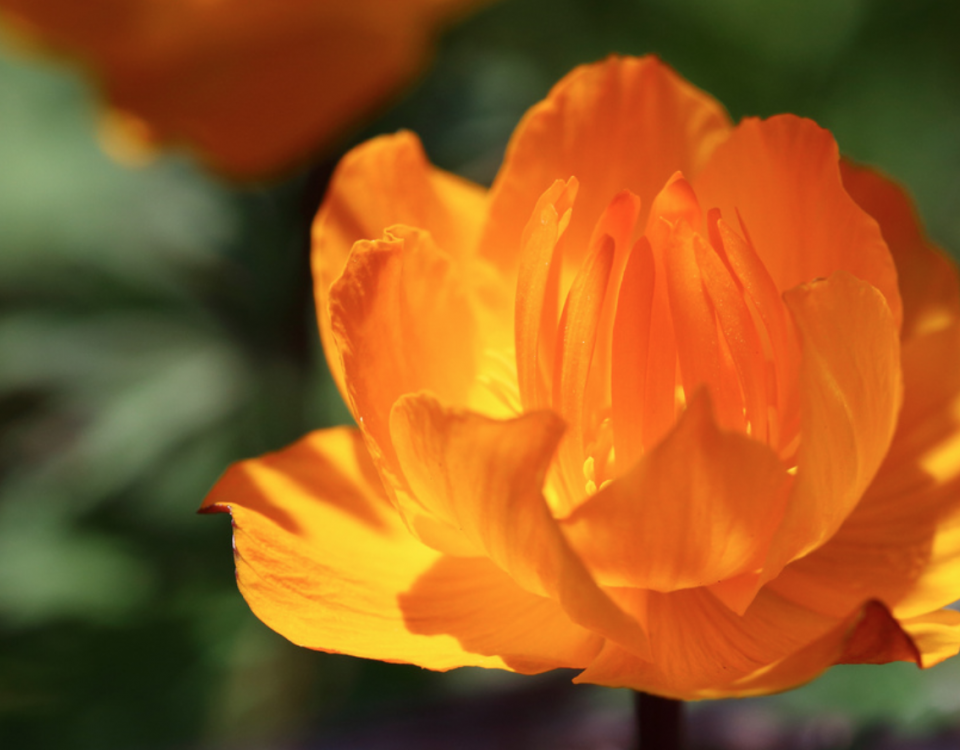The Five Snouts of Mongolia’s Herders

Wild Flowers Of Mongolia
April 1, 2024
Mongolia Must-Reads: Young Mongols by Aubrey Menard
April 4, 2024The Five Snouts of Mongolia’s Herders – A Snaphot
Our ‘A Snapshot’ series of posts offers a glimpse into the daily life, culture, and natural beauty of Mongolia. In this post, we turn our attention to the five snouts of Mongolia’s herders.
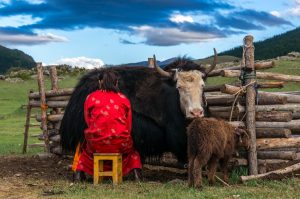
In Mongolia, pastoralism and its traditions have been a central feature of life from ancient times, and almost every aspect of society has been shaped by it. At the core of Mongolian pastoralism lies the bond between herders and their livestock, referred to as “mal” or “tavan khoshuu mal” (Five Snouts).
Herders’ intimate knowledge of their herds and animal husbandry is gleaned from a blend of oral tradition, hands-on experience, and observation. This deep understanding allows them to navigate the challenges of herding life with resilience and adaptability. While herders maintain a pragmatic approach towards their livestock, neither overly cruel nor excessively affectionate, they recognise the indispensable role these animals play in their livelihoods.
As a visitor, understanding the symbiotic relationship between herders and their livestock will help to foster a deeper appreciation for Mongolia’s nomadic heritage. It sheds light on the resilience and resourcefulness inherent in traditional Mongolian culture, illuminating the profound connection between humans, animals, and the land.
What are the Five Snouts of Mongolia’s Herders?
The Five Snouts refer to the five main livestock animals traditionally kept by Mongolian herders:
- Horses: the backbone of the Mongolian nomadic culture
- Sheep & Goats: the providers of meat, wool and dairy products
- Cattle (including yaks): the multipurpose livestock of the steppes
- Camels: the desert nomads

These animals are not merely sources of livelihood for herders but integral components of Mongolian culture and identity. Each animal serves specific purposes, contributing to the sustenance, mobility, and cultural practices of herding communities in Mongolia.
There are a variety of livestock breeds, most being predominantly indigenous to Mongolia. Most have adapted to the conditions of a specific region such as desert-steppe or mountain-steppe. They have also adapted to the low temperatures and harsh weather conditions in the winter months by developing thick layers of fat (evident in the fat tails of the sheep) as well as a dense undercoat (such as in the undercoat of goats, known as cashmere).
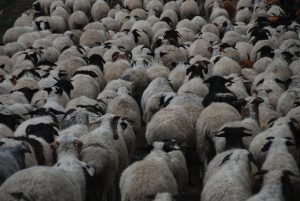
Each grouping of livestock is typically herded separately, apart from sheep and goats who are often combined into one group. Most livestock is free-ranging, but sheep and goats are more frequently monitored. Because of the vast pastures, livestock is mostly branded. Sheep, goats cattle, or yaks all have ear nicks. Horses are stamped (and sometimes camels) with actual branding marks (known as tamaga).
Livestock serve as an insurance policy for Mongolian herders, providing sustenance, transportation, and essential resources for daily life. In the nomadic lifestyle of Mongolia, every aspect of the animal is utilised to ensure the well-being and survival of the herding families.
Meat and dairy products are derived from all animals within the herds, ensuring a consistent food supply for the herders and their families. Horses, camels, and yaks serve as modes of transportation across the vast Mongolian landscapes, enabling herders to move their camps and livestock as needed. Additionally, the dung of these animals serves as a vital source of fuel for the central stove in the family ger.

The skin and wool of the livestock are utilised in various aspects of daily life. Animal skins are used to craft items both inside and outside the ger, including the ropes that secure the canvas covering of the ger. Sheep’s wool, in particular, plays a crucial role in the construction of gers, as it is used to make the felt that insulates the traditional dwellings, providing protection from the elements.
Furthermore, the wool from yaks, camels, and cashmere goats is highly prized for its quality and versatility. Yak and camel wool, known for their durability and warmth, are utilised in clothing production, providing protection against the harsh Mongolian climate. Cashmere, sourced from goats, is renowned worldwide for its softness and luxury, making it a coveted material for high-end clothing and textiles.
The utilisation of every part of the livestock exemplifies the resourcefulness and sustainability inherent in Mongolian nomadic culture. The symbiotic relationship between herders and their animals not only ensures the survival of both parties but also reflects a deep respect for the natural environment and the resources it provides.
A Mongolian Dzud
“Dzud” encapsulates a harsh reality unique to Mongolia – the perilous consequences of insufficient grazing conditions for livestock. This phenomenon, characterised by a lack of fodder due to various environmental factors such as drought, deep snow, or pasture degradation, exacts a devastating toll on Mongolia’s herding communities.
The onset of a dzud can stem from a myriad of circumstances, including a summer drought that leaves scant grass for winter grazing. In such cases, the arrival of snow offers little respite, as it often fails to penetrate the parched soil, leaving pastures barren come springtime. Recent years have borne witness to the calamitous impact of dzud events, with the winters of 2009/10 and 2015/16 standing as grim reminders of nature’s unforgiving hand.
The winter/spring of 2023/24 has proven no exception, as Mongolia grapples with yet another dzud crisis. By March 2024, the country had already mourned the loss of up to 5.9 million livestock, with over three-quarters of the nation engulfed by the harsh conditions of what’s known as white and iron dzud. Unrelenting blizzards since November 2023 and extensive snow coverage have compounded the severity of this season’s woes, exacerbating the struggle for survival among Mongolia’s herders.
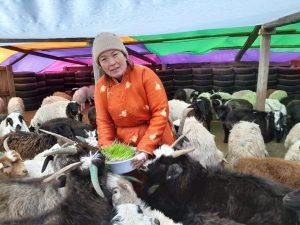
In Dundgobi Province, the Dembee family, one of our long-term partnerships, has rallied their local community in Baga Gazariin Chuluu to form a support network. Together, they aim to provide crucial assistance to families most in need during this difficult time. You can read more here.
Yet, amidst the wreckage wrought by this catastrophic winter, Mongolia’s resilient herders persevere, adapting to the caprices of climate and the ever-shifting quality of pasture. Recognizing the vital importance of maintaining healthy livestock, herders prioritise fattening their animals during the summer months, knowing that robustness is their best defense against the harsh winter ahead.
Traditionally, Mongolian herders have practiced rotational grazing, sharing communal pastures and adapting their movements according to the seasons and the availability of water and forage. While some herders traverse vast distances in search of sustenance, others remain closer to home, their movements dictated by the unique characteristics of their environment. Cooperation among herders, epitomised by the traditional “khot-ail,” underscores the communal spirit that has long defined Mongolia’s herding way of life, where shared labour and grazing management foster mutual survival in the face of adversity.
The Five Snouts of Mongolia’s herders represent more than just livestock; they embody a centuries-old tradition of resilience, adaptation, and cultural richness. Recognising the importance of these animals not only enriches your travel experience as a visitor to Mongolia but will also help you to develop a deeper understanding and respect for Mongolia’s nomadic heritage.
To gain a comprehensive understanding of Mongolia’s herders and their way of life, delve into our series of blog posts, which cover a range of topics:
- The Herding Calendar: Explore the intricate rhythms of nomadic life by delving into the herding calendar. Discover how Mongolia’s herders navigate the changing seasons, plan migrations, and manage their livestock throughout the year – https://www.eternal-landscapes.co.uk/the-mongolian-herding-calendar/
- How to Make Your Visit to a Herding Family as Responsible as Possible: Embark on your journey to Mongolia with a commitment to responsible tourism. Our guide offers practical tips and advice on how to engage with herding families in a respectful and sustainable manner. Learn about cultural etiquette, environmental stewardship, and ways to support local communities while minimising your impact on their way of life – https://www.eternal-landscapes.co.uk/how-to-visit-a-mongolian-nomadic-family-respectfully/
- Understanding Herders’ Migration: Step into the shoes of Mongolia’s herders and follow their migratory routes across the vast steppes. Explore the reasons behind herders’ seasonal migrations, from seeking fresh pastures for their livestock to adapting to changing environmental conditions – https://www.eternal-landscapes.co.uk/mongolian-nomads-migration/


